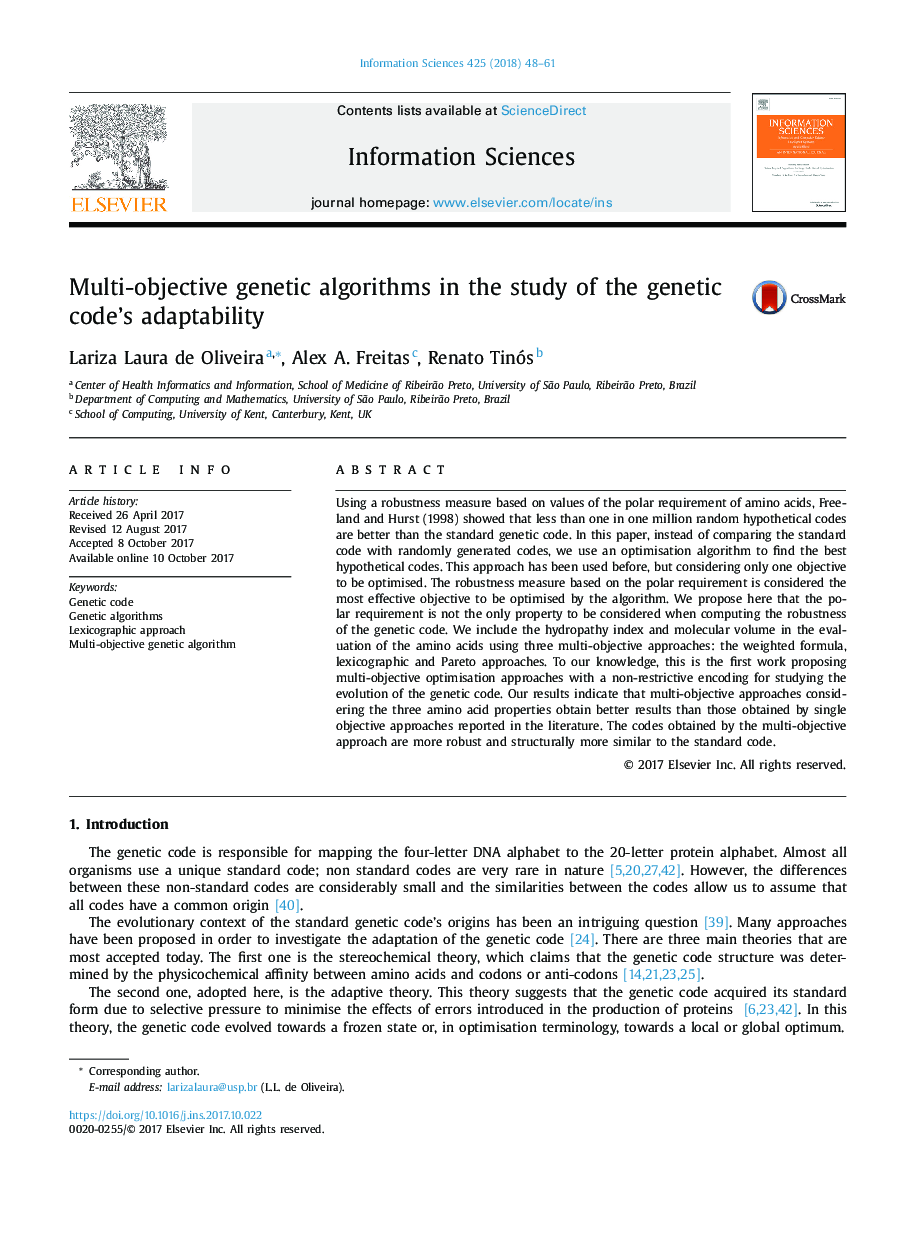| Article ID | Journal | Published Year | Pages | File Type |
|---|---|---|---|---|
| 6857036 | Information Sciences | 2018 | 14 Pages |
Abstract
Using a robustness measure based on values of the polar requirement of amino acids, Freeland and Hurst (1998) showed that less than one in one million random hypothetical codes are better than the standard genetic code. In this paper, instead of comparing the standard code with randomly generated codes, we use an optimisation algorithm to find the best hypothetical codes. This approach has been used before, but considering only one objective to be optimised. The robustness measure based on the polar requirement is considered the most effective objective to be optimised by the algorithm. We propose here that the polar requirement is not the only property to be considered when computing the robustness of the genetic code. We include the hydropathy index and molecular volume in the evaluation of the amino acids using three multi-objective approaches: the weighted formula, lexicographic and Pareto approaches. To our knowledge, this is the first work proposing multi-objective optimisation approaches with a non-restrictive encoding for studying the evolution of the genetic code. Our results indicate that multi-objective approaches considering the three amino acid properties obtain better results than those obtained by single objective approaches reported in the literature. The codes obtained by the multi-objective approach are more robust and structurally more similar to the standard code.
Related Topics
Physical Sciences and Engineering
Computer Science
Artificial Intelligence
Authors
Lariza Laura de Oliveira, Alex A. Freitas, Renato Tinós,
